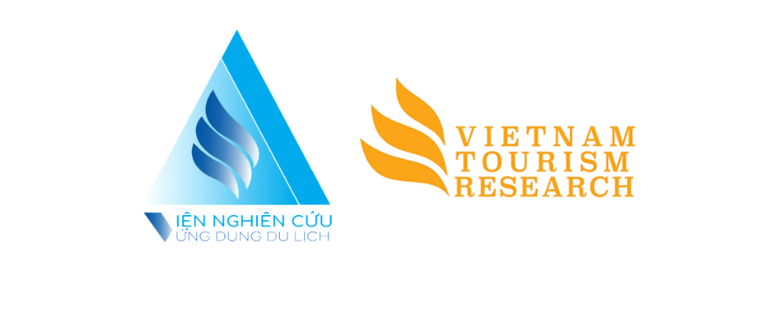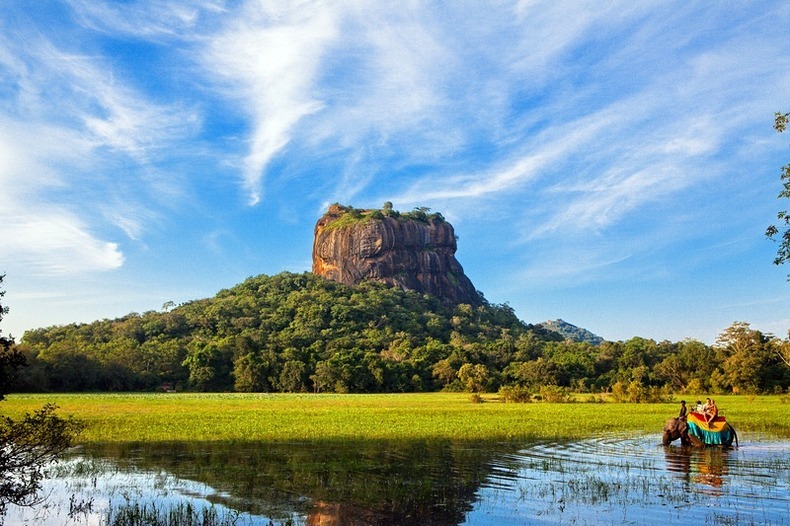This post is also available in:
Tiếng Việt (Vietnamese)
Over the past three years, the global tourism industry has faced unprecedented disruption due to the COVID-19 pandemic and concurrent economic shocks, including the crisis in Sri Lanka. The 2022 UNWTO World Tourism Day theme, “Rethinking Tourism,” underscored the need to reassess and redesign the sector toward sustainability, resilience, and inclusion
Drawing on the webinar “UNWTO World Tourism Day, 2022 at UOC – Way Forward for Sustainable Tourism,” organized by the Department of Economics, University of Colombo, this paper synthesizes expert perspectives on the post-pandemic context, emerging trends, and actionable strategies for sustainable tourism development at a global scale, with targeted lessons for Sri Lanka
Recommendations emphasize evidence-based decision-making, crisis readiness, crowding/overtourism management, collaborative governance, knowledge system strengthening, technology investment, regional cooperation, and—critically—empowering women in the sector.
Introduction
Tourism is one of the world’s most significant economic sectors, employing roughly one in ten people globally and contributing over 20% of GDP in many countries. Recent years have revealed the sector’s structural vulnerability to global shocks such as COVID-19 and localized economic crises. In response, UNWTO designated “Rethinking Tourism” as the theme of World Tourism Day 2022.
The webinar “UNWTO World Tourism Day, 2022 at UOC – Way Forward for Sustainable Tourism,” hosted by the Department of Economics, University of Colombo, aimed to mobilize evidence-based knowledge and practical experience to revisit priorities, actions, and good practices for Sri Lanka’s sustainable tourism pathway. Speakers were invited to clarify:
• Their definitions of “rethinking tourism” and its links to sustainable development;
• Priority proposals and recommendations for resilient growth and sustainable tourism;
• Transferable lessons from global good practices for resilient and sustainable development.
Context and Current Challenges in Tourism
COVID-19 severely disrupted global tourism, making it one of the hardest-hit sectors. Although 2022 saw strong signs of recovery—with international arrivals doubling from 2021 and some destinations surpassing pre-pandemic levels—several persistent challenges remain:
• Climate change: High vulnerability demands urgent decarbonization and structural transition.
Transformational forces: The rise of the sharing economy, overtourism, and demographic shifts continue to strain global tourism systems.
• Shifting behaviors and attitudes: Community sentiment toward tourism is evolving, while travelers increasingly acknowledge the social and environmental costs of uncontrolled mass tourism.
• A management paradigm shift: A transition is required from crisis management (reacting to sudden events like COVID-19) to transition management (addressing gradual, long-term issues such as climate change). This calls for a model shift over the coming decade supported by strong public leadership, evidence-based policy, industry collaboration, and sustainable innovation.
Defining “Rethinking Tourism”
Experts concur that “rethinking tourism” is not about coining a new label but about the rigorous and effective application of long-standing sustainable tourism principles. With a three-decade track record, sustainable tourism provides a robust foundation for balanced development that meets the needs of current visitors and host communities while safeguarding the capacity of future generations.
According to Dr. Maryam Shakila, “rethinking tourism” entails reassessing and promoting tourism as a responsible and sustainable product—positioning it as a driver of economic growth and sustainable development, particularly in the wake of COVID-19 and economic crises. The pandemic exposed the interdependence and fragility of the tourism ecosystem, showing that tourism can both stimulate economic activity and, if unmanaged, erode culture, heritage, and broader social wellbeing.
Trends and Lessons from International Practice
Lessons from Dubai
Dubai’s success stems from an international lifestyle interwoven with local culture, world-class retail, and distinctive activities (indoor skiing, camel rides, Arab architecture, swimming with dolphins). Low linguistic and cultural barriers—reflecting more than 190 nationalities in the UAE—also contribute. Emerging trends include:
• Bleisure travel (business–leisure trips);
Medical tourism;
Automation and personalization (self-service check-in, contactless payments);
Virtual-reality-enabled previews of hotels/rooms and attractions;
Active eco-tourism (hiking, cycling, kayaking, rural and riverside destinations);
Transformative travel;
Experience tourism focused on once-in-a-lifetime or emotionally resonant experiences (e.g., Dubai Shopping Festival);
Longer stays enabled by remote work;
Staycations and nearby vacations;
Solo travel;
Local experiences tied to festivals and cultural activities;
Customer-experience optimization to cultivate loyalty and repeat visitation.
Lessons from the Maldives
Despite limited resources (sea, sun, sand), the Maldives has sustained and amplified its destination brand and global appeal through:
• Safety and controlled isolation: The “one-island, one-resort” model and stringent health protocols created a “safe haven” during and after the pandemic;
Repositioning: Broadening from a luxury/honeymoon image to community-based tourism and guesthouses to enhance local benefit through experiential offerings;
Consistent policy coordination: Despite political volatility, tourism—as the economy’s linchpin—remained a national priority; government, private sector, NGOs, and the public acted in concert to uphold health and safety rules and promote tourism via campaigns such as “The sun will shine again” and “Rediscover Maldives: The sun of life”;
Beyond routine roles: Senior leaders engaged hands-on, subordinating individual ego to the sector’s shared objective.
Strategic Recommendations for Sustainable and Resilient Tourism
Support evidence-based decision-making
Knowledge, information, and continuous monitoring are the foundation of a credible approach to sustainable tourism.
Example: a hotel needs to measure its carbon emissions to reduce them effectively; a destination marketing organization should consult local residents about the forms of tourism they prefer.
Establish and operate Sustainable Tourism Observatories (e.g., at Curtin University, Australia) to support continuous information gathering on sustainable tourism development.
Preparedness for crises
Crises should be viewed as a process, not a single event.
It is important to link crisis response with recovery, prevention, and preparedness; there are always opportunities to learn from crises.
In health crises, hard facts about how well a destination manages public health are crucial to attract visitors back.
Make travel easy and convenient again, minimizing travelers’ financial risk (e.g., flexible cancellation policies, even if they are more costly).
Avoiding overtourism
Even during recovery, visitor numbers can quickly exceed a destination’s carrying capacity and create problems.
Maintain a delicate balance between too many and too few visitors. Destinations should respect their limits, as in South Tyrol, Italy, where the number of licensed beds is capped to sustain tourism quality and residents’ quality of life.
Ensuring collaborative tourism governance
Enable local communities to participate in the tourism development process.
A typical example is the Maldives opening local islands to community-based tourism alongside the traditional resort model.
Strengthening the tourism knowledge system
Seize opportunities for exchange and comparison among destinations, and especially among tourism research institutes and universities.
There is strong potential for cooperation in the Indian Ocean context on topics such as aviation, marine/coastal tourism, regional development, biodiversity conservation, and the links between food and tourism (e.g., tea tourism in Sri Lanka).
Investment in physical and technological infrastructure, innovation, and AI
The pandemic underscored the need to focus on safety and hygiene. Invest in physical and technological infrastructure to foster innovation, explore Artificial Intelligence (AI), and ensure superior safety and hygiene in the tourism experience.
Provide training to implement and monitor policies across the tourism value chain.
Develop the necessary human resources and infrastructure; advance digital transformation and analytics.
Emphasizing sustainability and inclusion
Sustainability must become a core element. Research indicates that 70% of travelers expect the industry to provide more environmentally friendly options, and 46% of European travelers are concerned about waste management.
Ensure that tourism is for everyone, promoting inclusive growth and development.
Measures focusing on safety and health must be communicated clearly.
Regional cooperation
Sri Lanka can explore regional cooperation to build an industry recovery strategy, viewing neighboring countries as complementary partners rather than threats.
Example: combine experiences in the Maldives (sea), Sri Lanka (hills and tea estates), and Nepal (the Himalayas) to create diverse and attractive packages.
Consider targeting South Asian travelers and relying less on European and North American markets.
Repositioning Sri Lanka’s brand
Sri Lanka has unique potential beyond the traditional images of beaches, heritage, or major events such as Kandy Perahera.
A new branding and marketing strategy is needed that reflects how visitors perceive Sri Lanka.
Promote wellness tourism—Ayurveda and physical, mental, and spiritual wellbeing—drawing on local traditions and culture.
Elevate educational and experiential homestays: not only for budget travelers but also as opportunities for learning and deep cultural immersion.
Link gemstones with tourism by highlighting their healing and spiritual attributes.
Diversify destinations: promote cultural and spiritual sites beyond Kandy, such as Kataragama and Jaffna.
Build an overall Sri Lanka brand: a marketing slogan for the entire country rather than relying solely on individual brands or events.
Enhancing women’s participation in tourism
Women constitute a majority (54%) of global travelers and often make decisions about subsequent holidays; they seek innovation, value safety, and often travel in groups.
In Sri Lanka, although women account for 52.4% of the population, only 9% serve as ministers or hold roles within the tourism sector.
Adopt flexible policies to enable women’s participation; encourage home-based micro-industries, handicraft businesses, and community guesthouses.
Overcome cultural and social norms that restrict women’s participation; change perceptions and attitudes, and re-educate teachers and the public about the sector’s potential and women’s safety at work.
The tourism industry should offer long-term career prospects for women to retain capable personnel, rather than losing them by their mid-20s.
Conclusion
Ngành du lịch đang trong giai đoạn định hình lại quan trọng. Thách thức hiện tại cần được nhìn như cơ hội để tìm kiếm chiến lược và chính sách hiệu quả nhằm phục hồi kiên cường và tăng trưởng bao trùm—trên nền tảng quản lý và phát triển du lịch bền vững. Điều này đòi hỏi sự tham gia chân thành của tất cả các bên liên quan: chính phủ, khu vực công – tư, tổ chức phi chính phủ và cộng đồng. Bằng cách tập trung vào ra quyết định dựa trên bằng chứng, sẵn sàng cho khủng hoảng, tránh quá tải, thúc đẩy quản trị hợp tác, tăng cường tri thức, đầu tư công nghệ, hợp tác khu vực và đặc biệt là nâng cao vai trò của phụ nữ, Sri Lanka và các quốc gia khác có thể xây dựng một ngành du lịch vừa phát triển về kinh tế, vừa bền vững về môi trường, vừa công bằng về xã hội.










